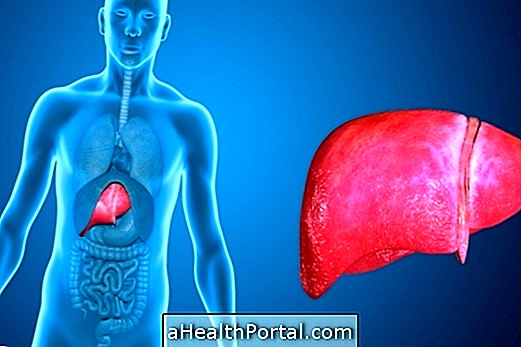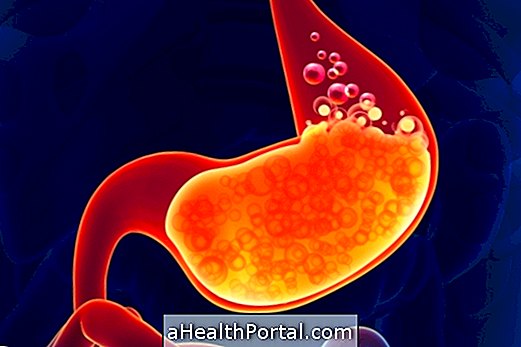H. pylori, or Helicobacter pylori, is a bacterium that lodges in the stomach or intestine, where it damages the protective barrier and stimulates inflammation, which can cause symptoms such as abdominal pain and burning, in addition to increasing the risk for the development of ulcers and cancer .
This bacterium is usually identified during the endoscopy examination, through a biopsy or through the urease test, which are the most common methods for the detection of bacteria.
Omeprazole, Clarithromycin and Amoxicillin, as prescribed by the general practitioner or gastroenterologist, are also recommended. It is also very important to adopt a diet that helps to relieve the symptoms of gastritis and should be based on vegetables, white meat, and avoid excesses of sauces, seasonings and industrialized foods.

How is the treatment done?
It is very common to have the H. pylori bacteria without symptoms, often being found in a routine examination, however, the treatment is only indicated in the presence of some situations, such as:
- Peptic ulcer;
- Gastritis;
- Intestinal tumor, carcinoma type or gastric lymphoma;
- Symptoms, such as discomfort, burning or stomach pain;
- Family history of gastric cancer.
This is because unnecessary use of antibiotics increases the chances of bacteria resistance and cause side effects. Learn what to eat to avoid side effects and what foods help fight H. pylori.
Remedies to treat H. pylori
The most commonly prescribed remedy to cure H. pylori is the combination of a stomach shield, which may be Omeprazole 20mg, Ianzoprazole 30mg, Pantoprazole 40mg or Rabeprazole 20mg, with antibiotics, usually Clarithromycin 500mg, Amoxicillin 1000mg or Metronidazole 500mg, which can be used separately or as a combination pill, such as Pyloripac.
This treatment should be done in a period of 7 to 14 days, 2 times a day, or according to medical guidance, and must be followed strictly to avoid the development of drug resistant bacteria.
Other antibiotic options that can be used in cases of treatment-resistant infections are Bismuth subsalicylate, Tetracycline, Tinidazole or Levofloxacin.
Home treatment
There are home-based alternatives that can complement medication treatment as they help control stomach symptoms and control the proliferation of bacteria, but they do not replace medical treatment.
The consumption of zinc-rich foods such as oysters, meats, wheat germ and whole grains, for example, in addition to strengthening the immune system, facilitate the healing of ulcers and decrease inflammation in the stomach.
Foods that help eliminate bacteria in the stomach, such as natural yogurt, because it is rich in probiotics, or thyme and ginger, because they have antibacterial properties can also be a great way to help the treatment.
In addition, there are foods that help control acidity and lessen the discomfort caused by gastritis, such as bananas and potatoes. Check out some recipes for home treatments for gastritis and see how the diet should be during the treatment of gastritis and ulcer.
How it is transmitted
Infection with H. pylori bacteria is very common; there is evidence that it can be caught through saliva or oral contact with water and food that has come in contact with contaminated feces, but its transmission has not yet been fully clarified.
So to prevent this infection, it is very important to take care of hygiene, such as washing hands before eating and after going to the bathroom, and avoid dividing cutlery and glasses with other people.
How to identify and diagnose
It is very common to have the infection by this bacterium, without occurring symptoms. However, it can destroy the natural barrier that protects the inner walls of the stomach and intestine, which undergo effects of gastric acid, in addition to increasing the inflammation capacity of tissues in this region. This causes symptoms such as:
- Pain or burning sensation in the stomach;
- Lack of appetite;
- Nipple;
- Vomiting;
- Stools with blood and anemia, as a result of the erosion of the walls of the stomach.
The diagnosis of the presence of H. pylori is usually made with a biopsy collection of tissue from the stomach or duodenum, with which bacterial detection tests such as the urease test, culture or tissue evaluation can be performed. See how the urease test is done to detect H. pylori .
Other possible tests are the urea respiratory detection test, blood test serology or fecal detection test. See other details on how to identify the symptoms of H. pylori .























